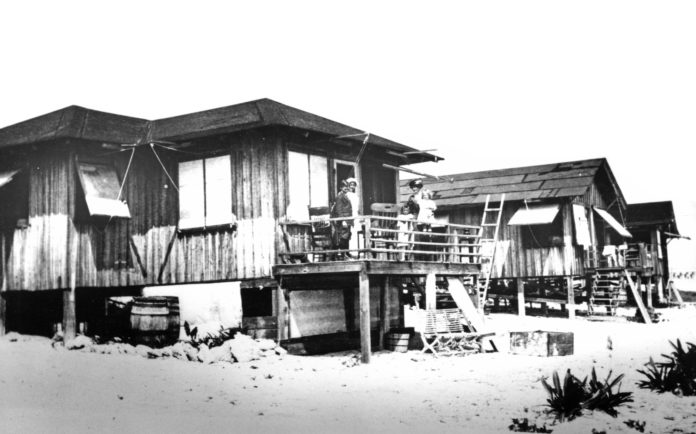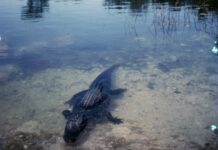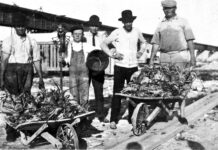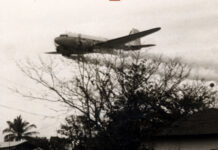Weird things happen in the Florida Keys. Some of these odd occurrences can occasionally appear to have a paranormal connection, which makes sense considering that Key West is said to be one of the most haunted cities in the United States.
Grabbing on to the idea that Key West, occasionally referred to as Key Weird, is not the only island in the chain where unusual events occur, the following potential weirdness is offered.
If you have ever driven along the Overseas Highway and across Summerland Key, near MM 25, and that classic 1960s folk song “Everybody’s Talkin” pops into your head, there may be a good reason.
The song was written by New York folk singer Fred Neil in 1966 and was released the same year. “Everybody’s Talkin” was famously featured in the Jon Voight and Dustin Hoffman classic “Midnight Cowboy.” Though scores of singers have recorded the song, perhaps the most famous version was done by Harry Nilsson. It is Nilsson’s version that is featured in the movie. Nilsson was a favorite of the Beatles and was once considered the “American Beatle.” While his voice might echo in your mind, he is not the reason the song popped into your head.
That reason would be Fred Neil, who wrote the song while recording his second album, the self-titled Fred Neil, in a Los Angeles studio. Anxious to return home to Florida and one track short for his album, Neil’s producer told him that if they recorded one more song, he could leave. According to the story about that moment, Neil went into a bathroom and created the song in 10 minutes. When he stepped back into the studio, he recorded it in one take and flew home to Coconut Grove.
Neil spent his final years living on Summerland Key, where he died in his home on July 7, 2001. When the police arrived, a reported $13 was found in his wallet, and a will was discovered on a nightstand by his bed. Though he was being treated for skin cancer, “natural causes” was noted on his death certificate after the autopsy. Perhaps, though Fred Neil left the physical plane, his spirit is still connected to the Florida Keys and that is the reason an old classic like “Everybody’s Talkin” might seep into your brain as if it had been delivered by the island breezes blowing across Summerland Key.
The island is home to another little mystery that presents a bit of a local puzzle. First, it should be noted that there has been more than one Summerland Key. There is the Summerland Key where Neil died at his home, and 10 miles east, after crossing Ramrod, Little Torch, and Big Pine Keys, there is West Summerland Key – identified in the U.S. Coast & Geodetic Survey chart No. 168, “Florida Reefs Long Key to Newfound Harbor Keys,” as Summerland Key in 1863.
The modern Summerland Key east of West Summerland Key is the larger of the two islands and vastly more developed. Around the turn of the century, it was home to the homestead of the Niles family, which is why the bridge connecting Summerland Key to Cudjoe Key is called the Niles Channel Bridge. When the Niles family owned a large part of the island, they had a chicken farm that also had livestock. In the 1940s, the Niles homestead was bought by Henry Hudgins, who developed the island into the residential community it is today.
When discussing the Summerland Keys, everybody talks about why the name West Summerland Key was chosen when the island is so clearly east of Summerland Key. The answer may be linked to Henry Flagler. As it turns out, before the Key West Extension of the Florida East Coast Railway came thundering down the Florida Keys, West Summerland Key, found in the area of MM 35, was one of three islands. As a group, they were once called the Spanish Harbor Keys. Individually they were known as West Summerland Key, Middle Summerland Key, and the easternmost island of the bunch that appears to have gone officially unnamed. During the Flagler era, fill was used to create the singular West Summerland Key.
While it is certainly odd that West Summerland Key was east of Summerland Key, the “west” designation was not referencing Summerland Key but the three Spanish Harbor Keys. It was the westernmost of those three islands and had no real connection to the larger Summerland Key.
West Summerland Key was once home to several Indian mounds and some buildings left over from the days when Henry Flagler’s men were building his railroad. They were also used for housing, as can be seen in the accompanying photograph. The island has since been renamed Scout Key and is home to the nine-acre oceanfront property called Camp Jackson Sawyer Boy Scout camp.
A classic folk song might not be drifting on the Atlantic breeze while crossing West Summerland Key, across Scout Key, but don’t be surprised if “Everybody’s Talkin” suddenly crawls into your head like an earworm while driving over Summerland Key.


























